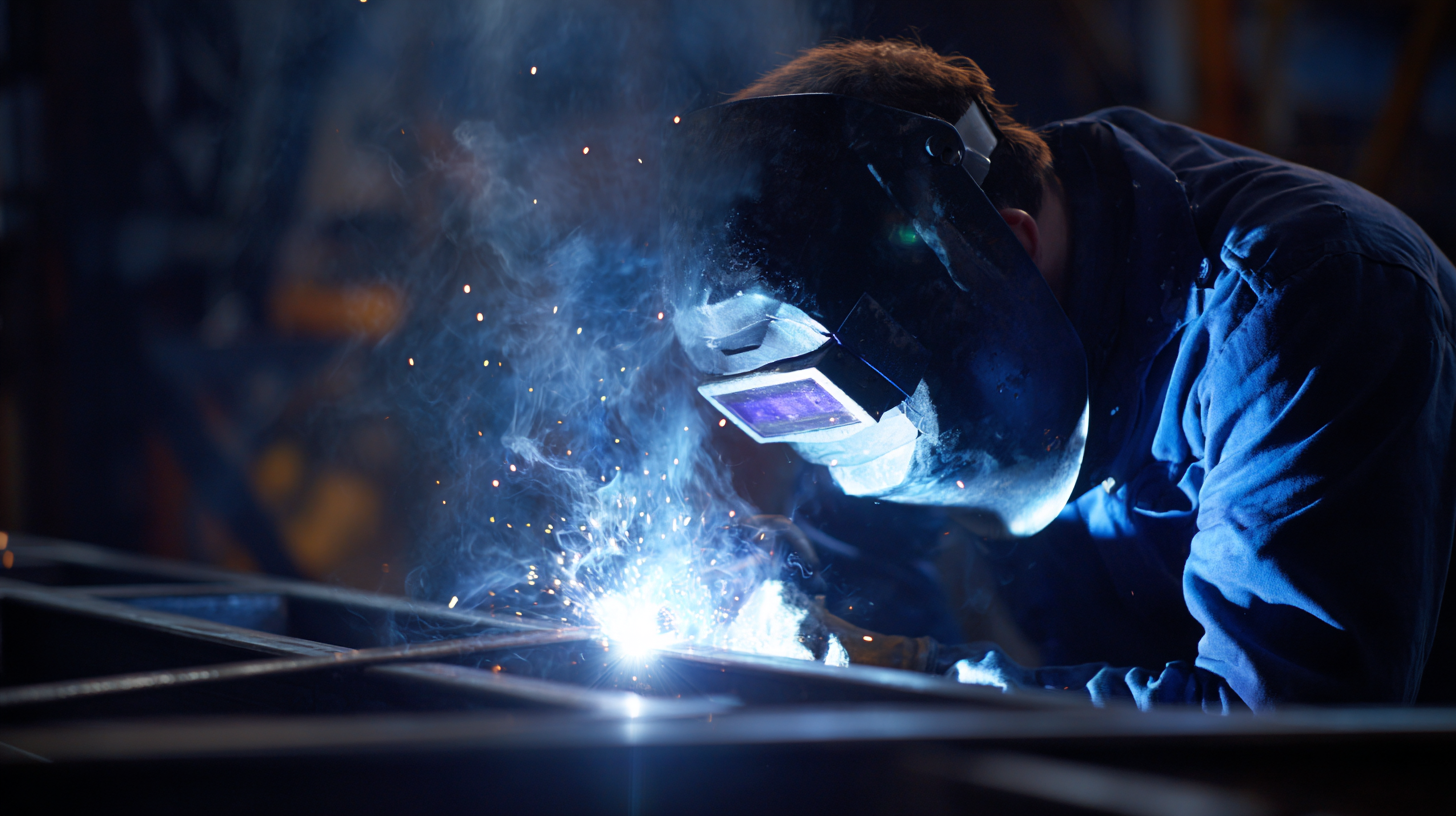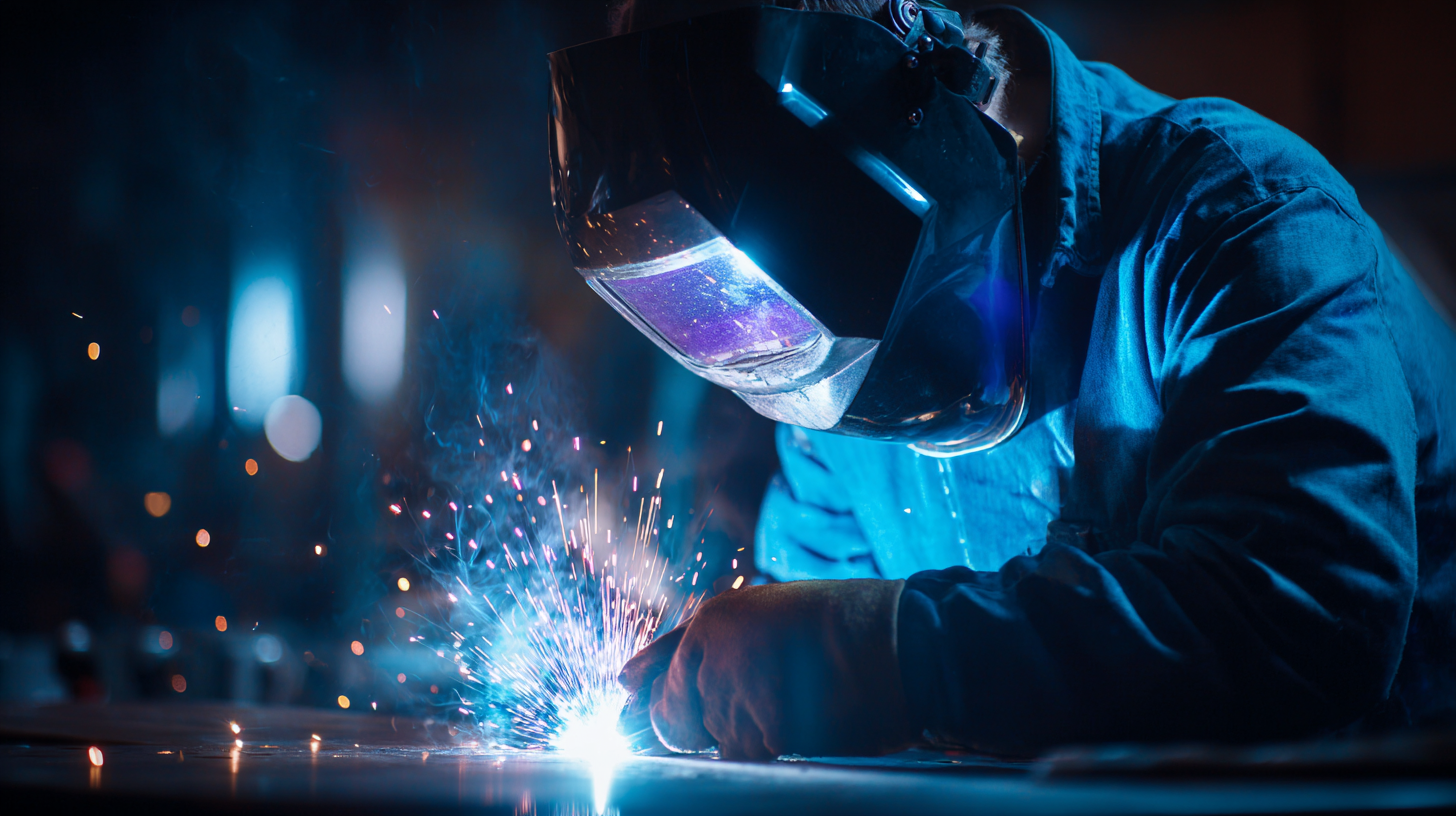Exploring Advanced Metal Welding Techniques: Boosting Efficiency and Quality in Industrial Applications
In the realm of industrial applications, the significance of advanced metal welding techniques cannot be overstated. As industries strive to enhance efficiency and quality, understanding the intricacies of metal welding becomes essential. This comprehensive guide will delve into the various "how to" methods that can transform traditional welding practices into innovative solutions, driving productivity and improving end results.

By exploring cutting-edge technologies, optimizing welding parameters, and implementing best practices, professionals in the field can elevate their metal welding projects to new heights. Moreover, the integration of automation and smart welding processes can further streamline operations, reduce costs, and ensure superior joint integrity. This introduction sets the stage for a detailed examination of these techniques, providing valuable insights for anyone looking to master the art of metal welding and its applications in modern industry.
Innovative Welding Technologies for Enhanced Productivity in Manufacturing
In the realm of modern manufacturing, innovative welding technologies are revolutionizing how industries approach metal fabrication. Techniques such as laser welding, robotic welding systems, and friction stir welding are enhancing productivity by streamlining processes and reducing human error. These advancements not only enable faster production speeds but also ensure higher accuracy and reduced material waste, making them indispensable for competitive industries.
**Tips:** When adopting new welding technologies, consider investing in employee training. Proper training can significantly improve the effectiveness of advanced systems, ensuring that staff are well-versed in operating machinery and troubleshooting potential issues. Additionally, integrating real-time monitoring systems can provide instant feedback on welding quality, which is crucial for maintaining standards.
Moreover, the use of automation in welding can lead to a significant uptick in efficiency. Automated systems can operate continuously, allowing for longer production runs without fatigue-related downtime. This shift not only maximizes resource utilization but also delivers consistent results, crucial for high-volume manufacturing where quality assurance is paramount.
**Tips:** Periodically review and update your welding equipment and technology to stay current with industry standards and advances. Keeping abreast of new developments can offer fresh ways to optimize your manufacturing processes and enhance product quality.
Applications of Automation in Metal Welding: Reducing Time and Errors
The implementation of automation in metal welding processes is revolutionizing the industry by significantly reducing both time and errors. As welding technologies advance, the integration of AI-driven automation systems enhances precision and consistency, leading to improved product quality. These systems enable real-time monitoring and adjustment, minimizing human error while optimizing parameters for various welding applications. This is particularly beneficial in sectors such as aerospace, automotive, and marine, where the need for reliable and efficient production is paramount.
Moreover, the growth of the welding consumables market, projected to reach USD 34.9 billion, highlights the increasing demand for advanced welding techniques and technologies. The ongoing trend towards automation aligns with this market expansion, as industries seek to adopt innovative methods that boost efficiency. By leveraging intelligent robotics and data-driven models, manufacturers can streamline operations and achieve higher output levels, making automation not just advantageous, but essential for future competitiveness in metal welding.
Quality Control Measures in Advanced Welding Techniques
Quality control is paramount in advanced welding techniques, as it ensures the integrity and durability of welded structures across various industrial applications. Implementing rigorous quality control measures can significantly reduce the risk of defects, which can lead to operational failures and costly repairs. One effective method involves the use of non-destructive testing (NDT) techniques, such as ultrasonic and radiographic testing, which allow for the examination of welded joints without compromising their structure. These methods enable welders and engineers to detect internal flaws early in the process, ensuring that only the highest quality welds are utilized.
 Additionally, adopting automated welding systems equipped with real-time monitoring capabilities enhances quality control. These systems can analyze factors such as temperature, speed, and pressure during the welding process, providing immediate feedback to the operator. By continuously monitoring these variables, manufacturers can make instant adjustments to maintain optimal welding conditions, thus improving the overall quality and consistency of the welds produced. With these advanced techniques and robust quality control measures in place, industries can achieve greater efficiency and reliability in their welding operations, ultimately leading to superior product quality.
Additionally, adopting automated welding systems equipped with real-time monitoring capabilities enhances quality control. These systems can analyze factors such as temperature, speed, and pressure during the welding process, providing immediate feedback to the operator. By continuously monitoring these variables, manufacturers can make instant adjustments to maintain optimal welding conditions, thus improving the overall quality and consistency of the welds produced. With these advanced techniques and robust quality control measures in place, industries can achieve greater efficiency and reliability in their welding operations, ultimately leading to superior product quality.
Training and Skill Development for Modern Welding Processes
The modern welding industry is experiencing a significant transformation through advancements in training and skill development. With the integration of digital and virtual technologies, organizations are redefining how welders are educated. The use of VR simulators for hands-on practice allows trainees to gain valuable experience in a risk-free environment, ultimately preparing them for the demands of the manufacturing sector. This innovative approach not only enhances the learning experience but also addresses the urgent need for skilled labor in the welding industry.
Additionally, the push for vocational training is becoming increasingly vital in various regions, like India and Ghana, where initiatives aim to strengthen welding technology talent. Collaborations between educational institutions and industry bodies are setting the groundwork for comprehensive training programs that can effectively bridge the skills gap. By focusing on contemporary welding techniques, these training programs are equipping fresh graduates with the necessary expertise to thrive in an evolving job market, ensuring that the welding industry continues to be a cornerstone of industrial development.

Future Trends in Metal Welding: Advancements and Sustainability
The metal welding industry is witnessing a significant transformation driven by advancements in technology and a growing emphasis on sustainability. As the market for industrial aluminum-coated apparel is projected to reach USD 529.96 million by 2024 and grow to USD 800.46 million by 2032, with a compound annual growth rate (CAGR) of 5.29%, there is a remarkable opportunity for the welding sector to adopt innovative techniques that enhance both efficiency and quality. Advanced welding methods, such as laser and robotic welding, are paving the way for increased productivity and precision, addressing the rising demands of various industrial applications.
Moreover, the composite fluid sector is on the brink of explosive growth, with promising forecasts suggesting a major breakthrough in 2024. However, investment analysts note that the commercialization of the composite fluid industry has not met expectations, primarily due to constrained capital expenditures from downstream battery manufacturers. This cautious approach may delay the much-anticipated industrial scaling, emphasizing the need for welding technologies that not only improve manufacturing efficiencies but also promote sustainability in production processes. As these advanced techniques continue to evolve, they will likely play a crucial role in shaping the future of metal welding and its applications across various industries.
Exploring Advanced Metal Welding Techniques: Boosting Efficiency and Quality in Industrial Applications
| Technique | Efficiency Improvement (%) | Quality Rating (1-10) | Sustainability Impact (Low/Medium/High) | Future Trend Potential |
|---|---|---|---|---|
| Laser Welding | 30 | 9 | High | High |
| TIG Welding | 20 | 8 | Medium | Medium |
| MIG Welding | 25 | 7 | Medium | High |
| Plasma Arc Welding | 35 | 9 | High | High |
| Friction Stir Welding | 40 | 10 | High | Very High |


